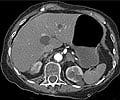Dealing with adolescence and teenage has always remained a problem for parents because of the vulnerability to habit formation, the curiosity to experiment and susceptibility to get easily influenced by peers.
Dealing with adolescence and teenage has always remained a problem for parents because of the vulnerability to habit formation, the curiosity to experiment and susceptibility to get easily influenced by peers . A new study throws light on the fact that teenagers who enjoy popularity are more likely to smoke than less popular classmates.
The study has been conducted among popular students in 16 Southern California middle schools. Over 1,486 students in the sixth grade were surveyed and a follow up study was conducted when they reached the seventh grade. Students were defined as smokers if they had ever smoked-whether just a puff or a whole cigarette-and they were classified as susceptible to smoking if they refused to rule out any smoking in their future. Popularity was measured by the number of times a young person was named as a friend by other students in his or her class.Analysis of the data revealed that more popular the students, they became more susceptible to smoking than their peers and were more likely to actually smoke than their peers. These students were found to be under the illusion that being among the first to experiment with smoking will help them stay popular. Popular students tried to set trends without deviating very far from the norms of the community.
Because popular students model behaviors that others imitate, smoking is expected to spread more rapidly among young people when popular boys and girls choose to smoke. The study also showed that isolated students-those who named no friends in the classroom-also were more likely to become smokers. The authors surmise that teen-agers who are isolated in the classroom may be connected to older friends who are more likely to smoke. These friends provide role models for smoking.
The link between smoking and popularity has implications for smoking and other substance-abuse prevention programs in schools. Prevention programs that use peer leaders have been found to be more effective than ones led by teachers, but if popular students embrace smoking; these programs will have limited success. Programs may therefore need to recruit and work with popular students if they hope to succeed.











